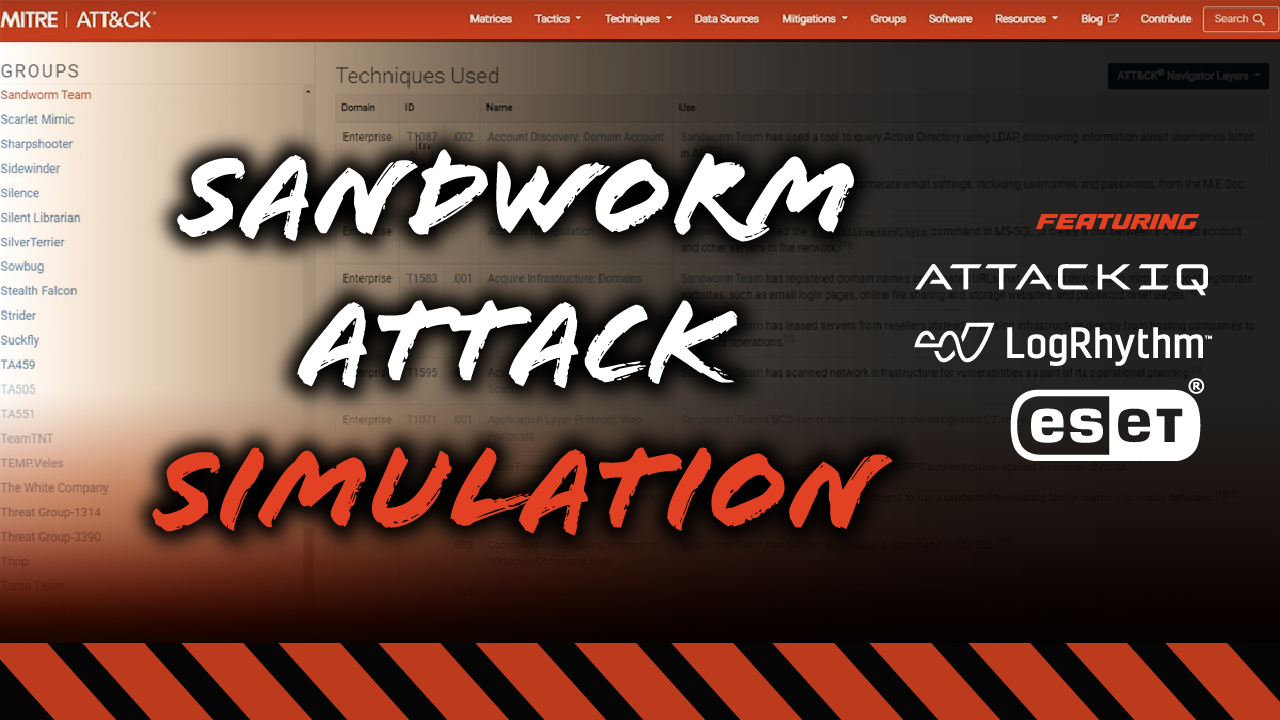Sandworm Attack Simulation: Tools and Insights from Leading Vendors
This Sandworm attack simulation showcases how a coordinated cybersecurity stack – featuring AttackIQ, ESET Inspect, and LogRhythm, can be used to assess systems readiness to sophisticated adversary tactics. Using the MITRE ATT&CK framework, the simulation mimics the behavior of the notorious Sandworm threat group to test detection and response capability and performance. Such testing is also effective in helping identify misconfigured systems.
The simulation is first configured in AttackIQ by importing a MITRE-based layer representing Sandworm’s known techniques. Once deployed, simulated attacker activity triggers multiple alerts in LogRhythm, including suspicious executables, DLL injections, and malicious PowerShell commands. Security analysts begin by reviewing high-severity alarms and tracing them back to their source on a demo Windows 11 machine.
Through LogRhythm and ESET Inspect, analysts collect evidence, track process trees, and identify indicators of compromise such as unknown executables with low reputation and aggressive file modification behavior. Each alarm, such as Python executing malicious commands or a trusted process loading suspicious DLLs is documented and attached to a case.
This Sandworm attack simulation continues with analysts applying remediation: blocking executables, isolating the affected host, killing processes, and scanning for malware. ESET’s AI-assisted workflows also help correlate related objects and suggest additional actions. Playbooks guide each step from evidence acquisition to incident resolution.
Once remediation is complete, the incident is updated in both ESET and LogRhythm case managers. Analysts confirm containment, add notes, and close the case. Metrics such as time to detection and time to response are also recorded.
This simulation proves the value of automation, threat intelligence, and integration across tools to stop advanced threats like Sandworm quickly and efficiently.

